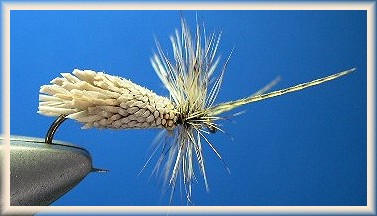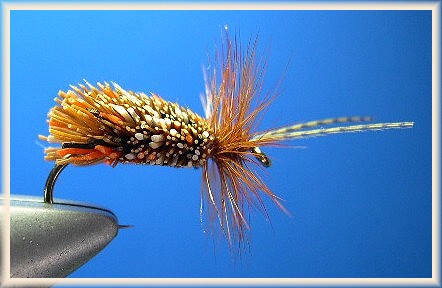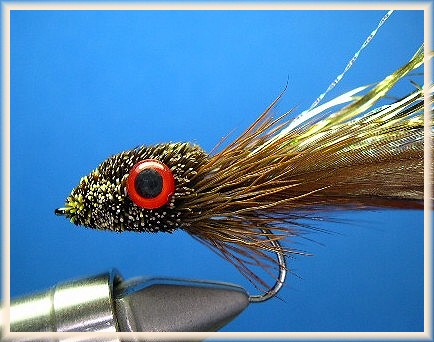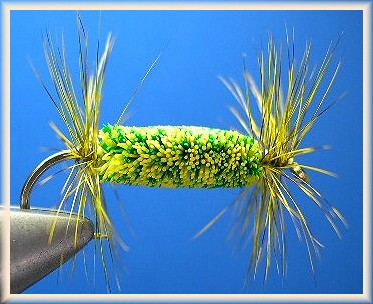Most fly tiers are familiar with flies that
have bodies made of clipped deer hair. The
Goddard Caddis pictured below is a good
example of this kind of fly.

I learned a neat variation for working with
deer hair bodies from a Fly Tyer article
(Autumn 1999) by Ward Bean. This technique is
called stir-blending and allows the tier to mix
several colors of deer hair in order to create
a fly that has a random, speckled look to it.
Stir-blending is great for imitating the coloration
of a sculpin, the wings on a caddisfly, and many
other species. The Goddard Caddis pictured below
was tied using the stir-blend technique. Note how
the "wings" are no longer solid but have a mottling
that is similar to that of a natural.

All you need to stir-blend deer hair is a hair
stacker and a stirring rod. I like to use a metal
crocheting hook as my stirring rod. Clip small
bunches of each color of hair, comb out the underfur,
clip the tips, and feed them into the stacker. Once
all the hair is in the stacker tap it a few times to
even the hair. Then take your stirring rod and stir
it around to blend the hair. Remove the stirring rod
and tap the stacker a few more times to even the hair.
Now you can remove the hair from the stacker, spin it,
and flare it.
Here are pictures of a few more flies tied using
the spin-blend technique. The first one is a
Sculpin Slider that I like to fish on a sinking
line when chasing smallmouth bass.

Here is a dry Fore and Aft pattern.

One last word of advice, when choosing hair
for this technique, make sure it is of similar
length, that way it will be easier to spin and
clip the deer hair body to shape. ~ Alberto Jimeno
alberto_jimeno@ti.com
Please check out the Fly Tying Section, on the Bulletin Board, here at FAOL too.
If you have any questions, tips, or techniques; send them to
publisher@flyanglersonline.com
|









